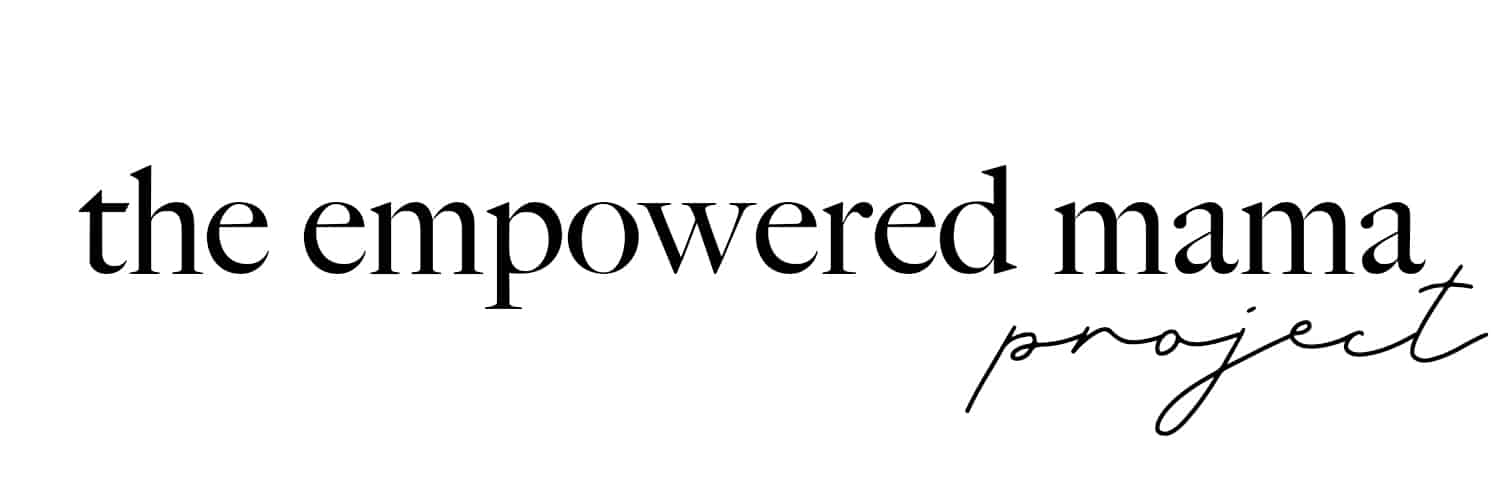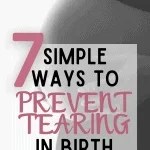Over the years, I’ve seen women birth very large babies without even a graze, and women birth not so big babies with extensive tearing.
Getting a tear during birth is, understandably, a very common fear for women.
See our post for how to overcome that fear, learn more about how the vagina stretches, and birthing with confidence here.
For some practical tips on what to do (and not do) to prevent tearing in birth, read on.
1 – Perineal Massage
Evidence shows that using perineal massage in pregnancy from 34 weeks onwards is a great way to prepare your mind and perineum for the sensation of birth, whilst minimising your risk of having a significant tear (3rd/4th degree) or episiotomy.
Perineal massage can be done by yourself, or if you find it too difficult to reach around that belly full of baby, your partner can do it for you.
Men often get a bit squeamish about this one. It might help to tell them that the worse you tear, the longer it is until he can get some lovin’ again.
There are lots of great videos on YouTube showing you how it’s done, like this one.
We recommend starting the massage after a warm bath or shower, so the tissues are soft and stretchy. Use a natural oil (eg. coconut, olive, apricot kernel oil), and don’t push your limit.
Listen to your body and what feels comfortable for you.
Perineal massage isn’t intended to mimic the big stretch of birth, so it’s not about stretching the perineum as much as you can. Your hormones and body are only in a state to perform that way during birth!
Massaging your perineum gives you a great opportunity to learn how to be mindful of the sensations, whilst practising gentle breathing, relaxation, and your J-Breathing (see number 3).
2 – Use Warmth
Historically thought to be an Old Mid-Wives Tale, modern evidence now supports what Midwives have known for decades.
Warmth to the perineum during birth can reduce the most severe perineal tearing, lower pain at birth and in the immediate several days following, and improve physical and psychological recovery for women.
It’s a no brainer really. Warmth = increased circulation = stretchier tissues = more comfortable birth.
So how is this done? If not birthing in a warm bath or shower, tell your Midwife you’d like them to hold a warm compress to your perineum during birth.
This is very simply a face-washer from a bowl of very warm water. I’ve used this technique hundreds of times over the years, and as soon as the compress first goes on, 9 times out of 10 the response is ‘aaaah, that feels nice’.
3 – Be Guided by Your Own Urge to Push
An instinctive urge to push is initiated by the depth of your baby’s head in your pelvis.
So you could be fully dilated and not feel the urge until baby has descended enough.
When that sensation comes, your uterus, which is a powerful muscle, will continue to surge (contract) and push your baby down and out. You can help this happen by being in an upright position (see number 5).
J-breathing, rather than directed pushing like you see in the movies, can support this bearing down process to be gentle rather than forceful, and therefore prevent significant tearing.
The J in J-breathing, also known as down breathing, comes from the way your baby moves down into your pelvis, around the curve of your pelvis and out, like a J shape.
The Positive Birth Company’s video tells you exactly how it’s done.
The best way to physically understand how this works is to start practicing J-breathing in pregnancy, when you do a poo. Don’t push, sit upright, knees apart, and visualise your breath moving down and out.
4 – Blow Out Candles
If you think you might forget this one, try to remember it this way – we blow out candles to birth our children gently, then they blow out candles on their cake every birthday after that.
Now you’ve done your J-breathing, baby’s head is going to start crowning (think of where a princess wears her crown). You now want to slow things down, gentle gentle, and ease babe’s head out to allow the tissues to stretch and prevent more severe tears.
You can do this by pretending to blow out candles, over and over.
You can practice it now. Close your eyes – visualise a candle burning, and blow it out just as you normaly would. Now do that same motion over and over again.

5 – Adopt an Upright Position
Every woman’s pelvis, and the position of her baby will be different to the next. That’s why there is no one optimal position in labour and birth.
What we do know from research however is that laying on our backs reduces the size of our pelvis, makes our uterus and baby work against gravity, and increases rates of perineal tearing, whilst upright positions facilitate easier labour and birth, better positioning of babe, and prevent significant tearing.
The Positive Birth Company’s video discusses some great positioning options and why they help.
For first time mothers Midwives often suggest avoiding a deep squat or sitting on a birth stool for an extended period, as the pressure/tension to the perineum can potentially increase risk of tearing.
6 – Choose Good Nutrition and Hydration
It’s a known fact that a diet high in good fats gives us healthier tissues. That means your perineum too!
My own Midwife taught me the benefits of Fish Oil supplementation to pregnancy and breastfeeding. Keeping well hydrated also helps prevent significant tearing by promoting more elasticity of tissues.
Some women struggle to stay hydrated because they don’t particularly like drinking water (guilty!) and turn to carbonated drinks, flavoured milk and juices high in sugar.
So the goal is to make hydration more enjoyable and healthy! Flavour your water with berries or lemon, drink lots of red raspberry leaf tea (hot or chilled) in the final few weeks of pregnancy.
You could even make up a large jug to chill in the fridge each morning (strawberry & mint is a fave) or have a water bottle and make it a goal to finish it X amount of times in the day.

7 – Explore Your Choices of Birth Place and Carer
If you hire someone to do a service around the house, like build a fence or lay some carpet, you’re going to look at their reviews. You want to make sure that you’re likely to get a good outcome.
Pregnancy and birth is the same – invest in it!
Educate yourself instead of just going with the flow, and you’ll be more likely to have a positive outcome for yourself and babe.
It’s known that place of birth and type of caregiver can have an impact of perineal integrity as well as maternal and neonatal outcomes.
Birth Centre or birth at home, and continuity of care with a known Midwife have been proven to improve outcomes. Of course these options aren’t for everyone – women birth best where they feel safest.
Professor Hannah Dahlen and Lecturer Holly Priddis discuss statistics of higher rates of episiotomies, interventions for low risk women, and increased rates of perineal trauma when birthing in private hospitals with Private Obstetricians in their article “What We Know About Perineal Tearing”.
Although the evidence is there, this of course does not mean that all Private Obstetricians fall under that umbrella.
So how DO we know whether a birth place or caregiver is a good choice in ensuring best outcomes? It’s all in the STATS people!
Ask your caregiver/hospital what their rates of episiotomies are. Ask about their induction of labour rates – an intervention known to increase risk of perineal trauma, and discuss strategies they use to prevent significant tears and episiotomies in birth.

























